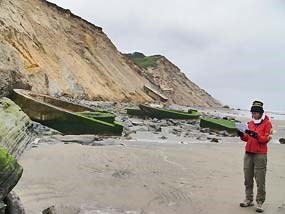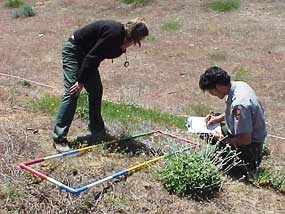
We have already indebted ourselves to some degree of climate change. Focusing on adaptation will help us adjust to a changing planet. Focusing on emission mitigation will prevent future climate change scenarios from worsening. If we act now, we can see improvement within our lifetimes. 
NPS photo The SF Bay Area Inventory & Monitoring Network is dedicated to tracking long-term ecological changes in the national parks. This will inform adaptation strategies. Scientists from the Inventory and Monitoring Program and park staff are monitoring a variety of indicators of climate change including:

NPS Photo These data will help park managers understand what is happening and inform their responses to ecosystem disruptions. In addition, the park will respond to the threats to both our natural and cultural resources by taking the following steps:
Further ReadingLearn more about the ecological monitoring we do here at Golden Gate. |
Last updated: January 4, 2021
